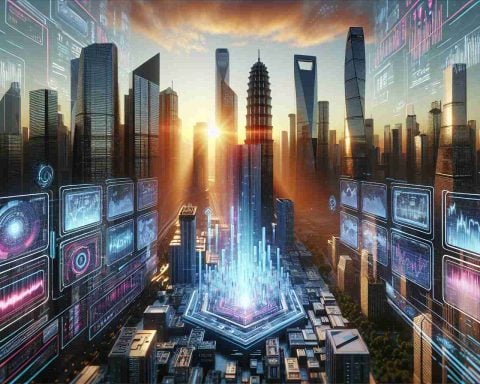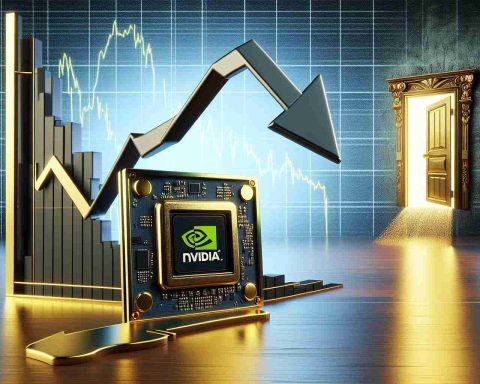In the dynamic world of artificial intelligence, Nvidia has emerged as a leading player, especially in 2023 and 2024. As we approach 2025, the market is abuzz with speculation: will Nvidia continue to be a top contender in AI stocks for the coming year?
Nvidia’s Dominance: Fueled by Cutting-Edge GPUs
Nvidia’s reputation in the AI sector is largely attributed to its state-of-the-art graphics processing units (GPUs). These powerful devices drive the complex operations of AI models by executing numerous calculations simultaneously. This capability is amplified when thousands of GPUs are interconnected, providing the robust computing power necessary for advancing AI technologies.
As AI models increase in complexity, the demand for enhanced computing capabilities escalates. For instance, the generative AI model by Meta Platforms, known as Llama, exemplifies this trend. Moving from its 3.1 version to a more advanced model will require tenfold the computing power, highlighting a broader industry trend. Consequently, major tech companies, including Meta, are expected to ramp up their AI investments in 2025, benefiting Nvidia significantly.
Valuation and Future Prospects
Despite Nvidia’s stock being at its priciest point recently, optimism about its future persists. Analysts anticipate substantial revenue growth, with expectations set at a staggering $193 billion for FY 2026—an impressive 49% increase. However, whether such projections can justify Nvidia’s high stock price remains a topic of debate.
The 2025 Forecast
Experts are divided on what 2025 will bring for Nvidia. Some believe the AI expansion is far from over, suggesting ongoing demand for GPUs. Others speculate that 2025 might mark the peak of AI computing needs, potentially triggering a shift in Nvidia’s market dynamics. A balanced outlook predicts 2026 might mirror 2025’s demands, establishing a potential equilibrium.
While the future is uncertain, Nvidia remains poised to play a pivotal role in the AI sector, likely maintaining its market-leading status.
The Hidden Impacts of Nvidia’s AI Leadership on Society and Industry
As Nvidia solidifies its position as a frontrunner in the AI sector, the ripple effects of its advancements extend beyond the confines of tech corporations, touching various aspects of society and industry. While much has been said about Nvidia’s cutting-edge GPUs and their role in driving AI development, there are other intriguing dimensions to consider, along with potential consequences for individuals, communities, and countries.
Innovating Beyond Tech: Impacts on Healthcare and Education
Nvidia’s technologies are facilitating breakthroughs in healthcare and education. For example, AI-powered diagnostic tools relying on robust GPU capabilities can now analyze medical images with unprecedented accuracy, leading to earlier disease detection and personalized treatment plans. These advancements not only improve patient outcomes but also decrease healthcare costs, making quality care more accessible—a notable advantage.
In education, AI-driven platforms are personalizing learning experiences for students. Nvidia’s hardware supports real-time data analysis and adaptive learning systems that cater to individual needs, ultimately improving educational outcomes. However, the rapid integration of AI in schools raises questions: How do we ensure equitable access? And what safeguards are needed to protect student data?
Economic Shifts and Workforce Implications
Nvidia’s AI dominance signals a transformation in the global economy. Enhanced productivity and innovation spur new industries and job opportunities. However, this technological shift also poses challenges, particularly for the workforce. Automation, bolstered by AI, could render certain jobs obsolete, leading to potential unemployment and necessitating reskilling initiatives. How can we prepare the workforce for such transitions?
Environmental Concerns and Sustainability
The massive energy demands of AI models reliant on Nvidia GPUs have sparked environmental concerns. As AI expands, so does its carbon footprint, prompting debates about sustainability. While Nvidia invests in energy-efficient technologies, the broader industry must address these environmental impacts. What measures can mitigate these concerns?
Global Competition and Geopolitical Tensions
Nvidia’s technological prowess influences global competitiveness. Countries investing in AI infrastructure and talent may gain economic advantages, potentially heightening geopolitical tensions. The race to dominate AI technology could lead to an arms race of sorts, with national security implications. How should policymakers navigate these challenges?
Internet of Things (IoT) Integration
Beyond traditional AI applications, Nvidia plays a crucial role in advancing the Internet of Things (IoT). The integration of AI with IoT devices enhances connectivity, enabling smart cities and efficient resource management. While these developments promise greater convenience and efficiency, they also pose privacy and security challenges.
Conclusion: Navigating the Future
Nvidia’s leadership in AI innovation presents both opportunities and challenges. While its technologies promise significant societal benefits, they also necessitate careful consideration of ethical, economic, and environmental factors. As we move towards an AI-driven future, a balanced approach is essential to harness the full potential of these advancements.
For more insights into AI and its broader societal effects, visit Nvidia and McKinsey & Company for their takes on technology and innovation.























